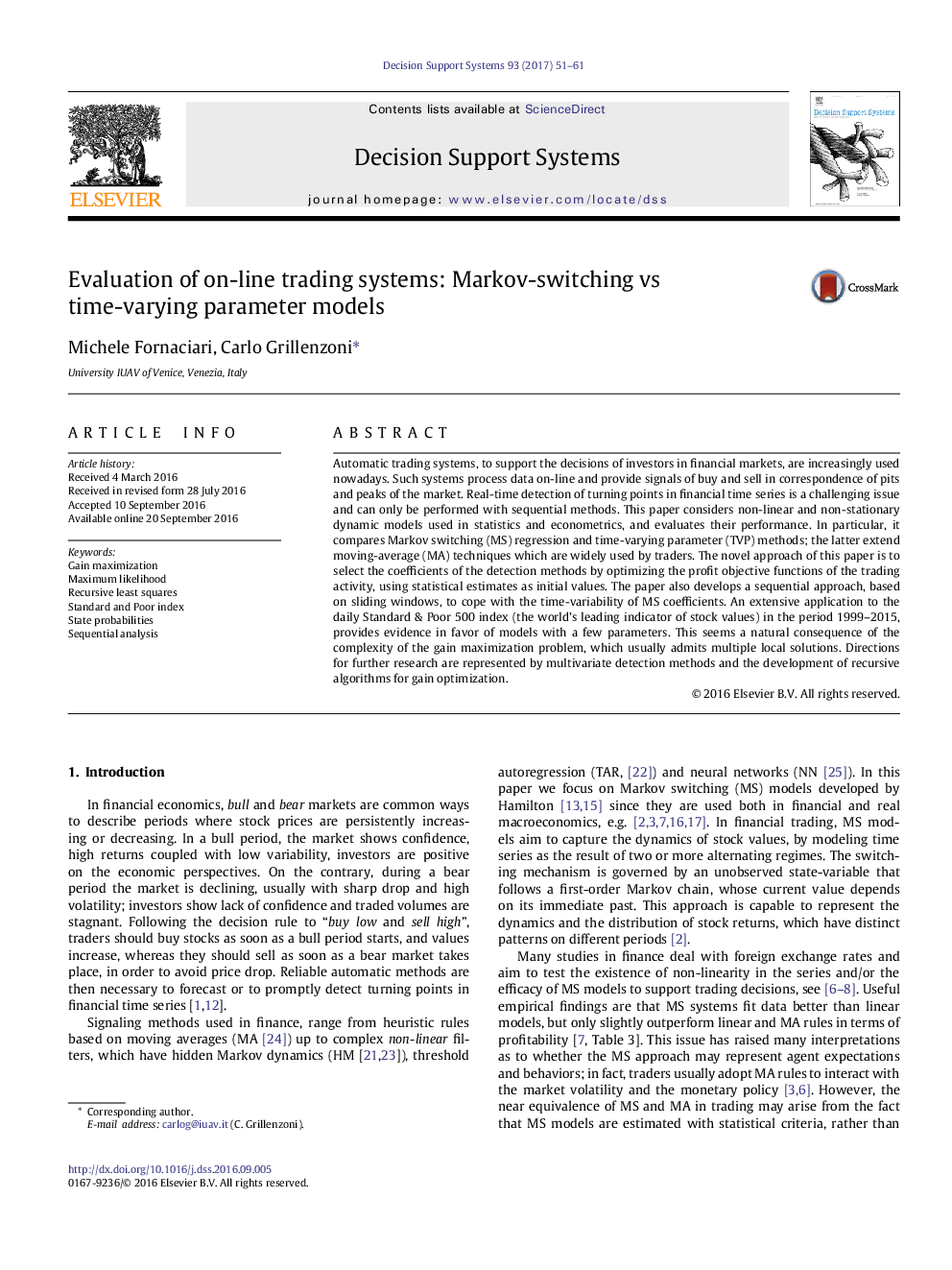| کد مقاله | کد نشریه | سال انتشار | مقاله انگلیسی | نسخه تمام متن |
|---|---|---|---|---|
| 4972525 | 1451051 | 2017 | 11 صفحه PDF | دانلود رایگان |
- Development of sequential turning-point detection in financial time series
- On-line signaling based on state-probabilities and recursive parameter estimates
- Comparison of non-linear and non-parametric models for financial trading
- Local and global optimization of trading rules based on profit functions
- Sliding-window estimation of Markov-switching regression models
Automatic trading systems, to support the decisions of investors in financial markets, are increasingly used nowadays. Such systems process data on-line and provide signals of buy and sell in correspondence of pits and peaks of the market. Real-time detection of turning points in financial time series is a challenging issue and can only be performed with sequential methods. This paper considers non-linear and non-stationary dynamic models used in statistics and econometrics, and evaluates their performance. In particular, it compares Markov switching (MS) regression and time-varying parameter (TVP) methods; the latter extend moving-average (MA) techniques which are widely used by traders. The novel approach of this paper is to select the coefficients of the detection methods by optimizing the profit objective functions of the trading activity, using statistical estimates as initial values. The paper also develops a sequential approach, based on sliding windows, to cope with the time-variability of MS coefficients. An extensive application to the daily Standard & Poor 500 index (the world's leading indicator of stock values) in the period 1999-2015, provides evidence in favor of models with a few parameters. This seems a natural consequence of the complexity of the gain maximization problem, which usually admits multiple local solutions. Directions for further research are represented by multivariate detection methods and the development of recursive algorithms for gain optimization.
Journal: Decision Support Systems - Volume 93, January 2017, Pages 51-61
